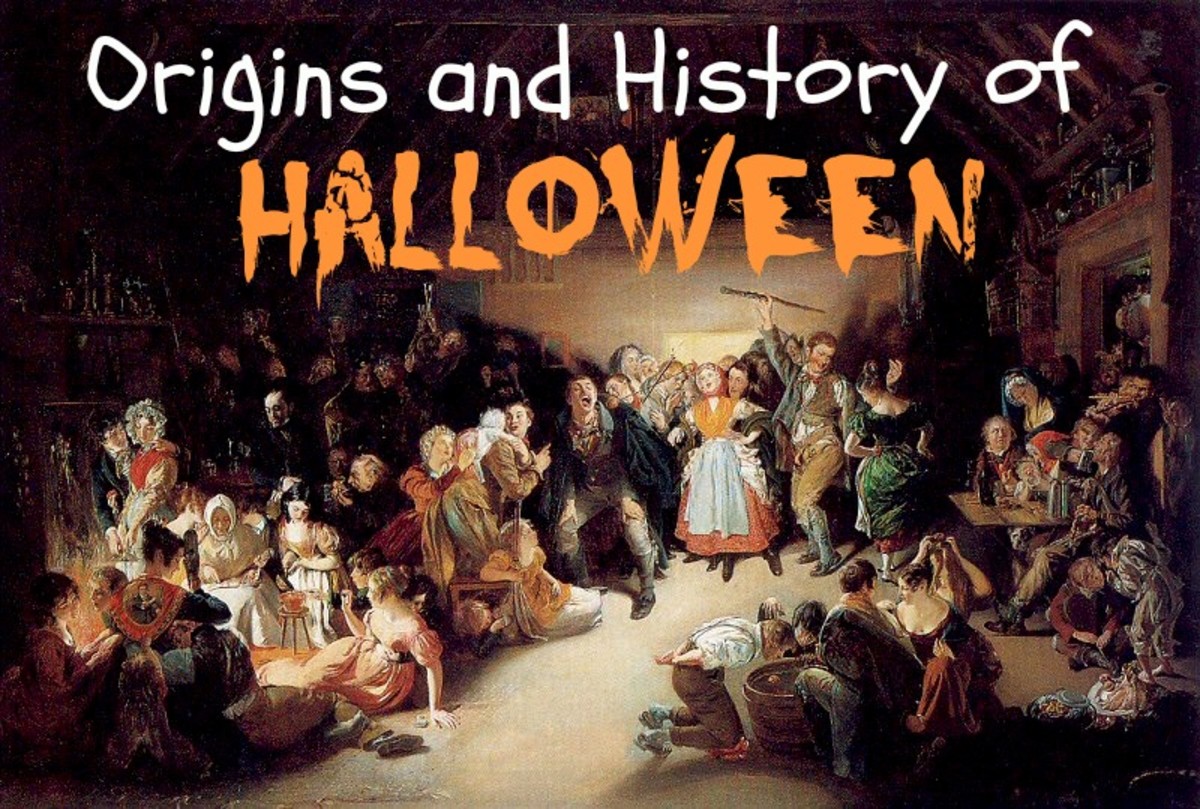


Dive into the intriguing history of Halloween, which originated from the ancient Celtic festival of Samhain. Discover how it later became a day filled with spooky fun, from trick-or-treating to carving pumpkins. From traditional customs to modern celebrations, learn about the evolution of this popular holiday and how it is celebrated around the world.
Background:
Halloween, celebrated annually on October 31st, is a day steeped in history and folklore. Its origins can be traced back to the ancient Celtic festival of Samhain, observed over two thousand years ago.
Celtic Origins of Samhain:
Samhain, meaning "summer's end," marked the transition between the Celtic year's warm and light half and its dark and cold half. It was believed that on this night, the boundary between the living and the dead became blurred, allowing spirits to cross over into the mortal realm.
Evolution into Halloween:
Over time, Samhain's traditions blended with Christian influences after the spread of Christianity in Ireland and Britain. The night before All Saints' Day (November 1st) became known as All Hallows' Eve, eventually shortened to Halloween.
Traditional Customs:
Traditional Halloween practices included dressing up in costumes to ward off spirits, carving pumpkins into jack-o'-lanterns, and divination games to predict the future. Trick-or-treating, a custom where children go door-to-door asking for treats, emerged in the 19th century and has become a beloved tradition.
Modern Celebrations:
Today, Halloween remains a popular holiday celebrated worldwide. It continues to feature traditional elements such as costumes and trick-or-treating, while also incorporating modern activities like haunted houses and horror movies.
1. What is the origin of jack-o'-lanterns? Answer: The tradition originated from the Celtic belief that spirits could be trapped and frightened by carving faces into turnips, which were later replaced with pumpkins.
2. Why do we wear costumes on Halloween? Answer: Costumes were originally worn to disguise participants from spirits that roamed the streets on Samhain.
3. What is the meaning of the colors orange and black associated with Halloween? Answer: Orange represents the harvest and fall foliage, while black symbolizes the darkness and mystery of the night.
4. Is Halloween a religious holiday? Answer: No, Halloween is not a religious holiday in its modern form. It originated from ancient Celtic beliefs and later became a secular celebration.
5. How is Halloween celebrated around the world? Answer: Halloween is celebrated in various ways around the world, with some countries emphasizing trick-or-treating and costumes, while others focus on bonfires, parades, or other traditions.

The Imperial War Museum has embarked on a groundbreaking project, using technology to bring historical archives to life and give a voice to the past. Through the use of cutting-edge techniques, the museum is unlocking stories that have long been silent, shedding new light on the events of the past. This innovative approach is providing a unique perspective on history and shaping our understanding of global events.

Dhanteras, also known as the festival of lights, falls on October 18th this year. To celebrate this auspicious day, people follow various rituals such as worshipping Lord Dhanvantari and Kubera and lighting diyas in the name of Yamaraj. According to traditional beliefs, performing these rituals with a pure heart and following prescribed customs can bring wealth, prosperity, and happiness into one's household. However, there is no scientific evidence to support these beliefs.

The much-awaited festival of Diwali is just around the corner and preparations are already underway. According to the 2025 calendar, the Lakshmi Puja Muhurat for Diwali has been announced to be on October 20. This auspicious day brings with it an opportunity for families to gather and worship Goddess Lakshmi for blessings of prosperity and good luck. The five-day festival, beginning with Dhanteras and ending with Bhai Dooj, each day holds a significant spiritual meaning and is eagerly awaited by devotees.

Just days before the festival of lights, Delhi-NCR was brought to a standstill as severe traffic congestion struck the region. The festive rush, combined with ongoing roadwork and market zones bustling with Diwali shoppers, resulted in major delays and gridlock across the city. In response, the Delhi Traffic Police issued a strong advisory and took several measures to handle the traffic overload and prioritize safety. As the weekend and Diwali shopping continue, commuters are reminded to plan their journeys carefully to avoid getting stuck in the chaos.

As festive celebrations pick up pace in the national capital, Delhi Traffic Police is urging people to plan their travel in advance due to widespread traffic disruptions. Ongoing road repairs and broken sewer lines have added to the traffic woes, prompting the police to cancel leaves and deploy personnel to handle the growing Diwali rush. Many major intersections have experienced bottlenecks, and motorists are advised to follow diversion routes and check live updates before stepping out.

Diwali, the festival of lights, celebrates good over evil and the victory of light over darkness. This year, Diwali falls on October 20, with Lakshmi Puja being the main ritual dedicated to Maa Lakshmi, the goddess of wealth. The Amavasya Tithi, which marks the new moon, is considered the most auspicious time for the Puja and falls between 3.44 pm on October 20 and 5.54 pm on October 21. Diwali is celebrated across India and in many countries with Indian-origin communities, with families coming together to light diyas, offer prayers, and prepare sweets and offerings for the goddess. Different cities have their own auspicious timings for the Puja, with Delhi's Pradosh Kaal being the most significant.

Union minister Nitin Gadkari faced accusations of conflict of interest from the ethanol blending policy, with allegations that his sons' company was benefiting financially. However, Gadkari has vehemently denied these claims, stating that the production of ethanol only accounted for less than 0.5% of his sons' company's supply. He adds that his efforts to promote alternative, cleaner fuels are to address the country's high fuel import costs and reduce pollution. The minister also criticizes the Congress' claims, calling them baseless and an attempt to discredit the government's policies.

A devoted fan of the Loch Ness Monster, Eoin O Faodhagain, has captured footage of a potential sighting on the Visit Inverness Loch Ness webcam. The video shows what appears to be a long, anaconda-like neck emerging from the water, which Mr O Faodhagain describes as being "thick as a man's thigh". This isn't the first time he has spotted something unusual on the webcam, as he claims a recent sighting is very similar to one he had earlier this year. He also shared pictures from a September sighting that showed two humps in the water.

The Brihanmumbai Municipal Corporation has announced an ex-gratia payment of Rs 31,000 for its employees for Diwali. This applies to all eligible BMC officers, teachers, and staff of private primary and secondary schools, as well as shikshan sevaks and employees of teacher training institutes. In addition, community health volunteers will receive a special gift of Rs 14,000 and kindergarten teachers and helpers will receive Rs 5,000. Maharashtra's Chief Minister and Deputy Chief Ministers have also extended Diwali greetings to all BMC officers and employees.

A 15-year-old boy tragically died after being electrocuted at a parking area designated for Prime Minister Narendra Modi's public meeting in Kurnool district. The boy was carrying an iron pipe to use as a flagpole, which accidentally touched a high-tension power line, leading to his death. The incident occurred just before the PM's meeting and police have registered a case. This news was first reported by the auto-generated syndicate wire service and no changes have been made to the original report.